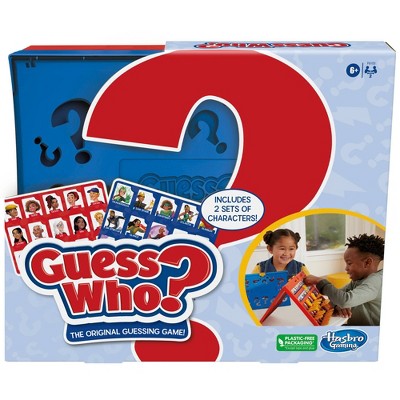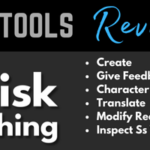Play to Learn: Guess Who
Guess Who– one of the games we all grew up playing and that we probably have in our game closets, if we have kids. The classic game is a fun way to practice deduction, observation, and strategic questioning skills. Just a quick review of the simple rules of the game
- Each player randomly selects one character from a separate pile of cards.
- The goal is to guess the opponent’s chosen character by asking yes-or-no questions about their character’s features.
- Players take turns asking yes or no questions.
- Players eliminate characters on their board who don’t match the given features.
- The game continues until one player successfully guesses the opponent’s character.
What if we took this basic game and inserted cards that connect to content we are teaching in our classrooms? By integrating curriculum content into this classic game, we can create an engaging learning experience for our students. Let me walk you through how I’ve designed these cards and how you can use them in your lessons.
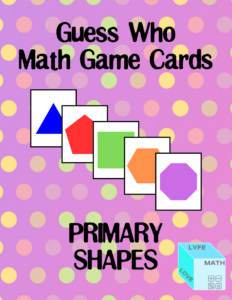 Why Guess Who?
Why Guess Who?
“Guess Who” is a fantastic game for developing critical thinking, observation, and questioning skills. But why stop at just the traditional characters? By incorporating educational content, we can make learning more dynamic and enjoyable.
Designing the Cards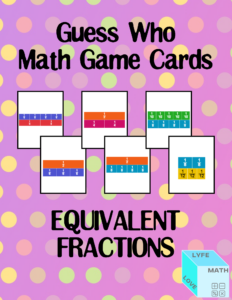
- Choosing the Theme: First, I selected themes that align with key subjects in the curriculum. For example, math concepts, historical figures, scientific terms, and vocabulary words.
- Creating the Characters: Each card features a character or term relevant to the theme. For math, I included different geometric shapes, fractions, and other math concepts. For history, I can use famous figures with distinct features and historical significance.
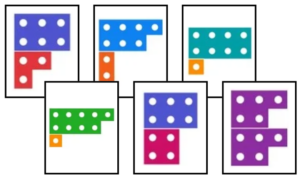
- Adding Visuals: Visuals are crucial for engagement and recognition. I designed each card with clear, colorful images to represent the character or term. This helps students quickly identify and differentiate between them.
- Incorporating Key Details: To make the game functional, each card includes key details that can be used for questioning. Students can use attributes on the cards with the matching vocabulary to question each other during the game.
How to Use in the Classroom
1. Reinforcing Lessons: After teaching a concept, use the “Guess Who” cards to reinforce what students have learned. For example, after a lesson on geometric shapes, students can play with the shape-themed cards to practice identifying different shapes and their properties.
2. Vocabulary Building: Use the game to introduce and reinforce new vocabulary. This can be particularly effective for language arts or science lessons where terminology is crucial.
3. Encouraging Collaboration: Have students play in pairs or small groups. This not only makes the game more fun but also promotes communication and teamwork skills.
4. Differentiation: Tailor the game to different skill levels by choosing or creating cards that match your students’ abilities. Simpler cards for younger or struggling students, and more complex ones for advanced learners.
5. Engagement and Motivation: Themed cards can make the game more interesting and engaging for students. When the content relates to their interests or current lessons, they are more likely to participate actively.
6. Critical Thinking and Deduction: The game requires players to ask questions and use deductive reasoning to guess the correct card. This practice can help develop critical thinking skills as students learn to ask strategic questions and make inferences based on the answers.
Here is a list of cards I have created so far!
- Subitizing with Numbers 3-10
- Subitizing with Numbers 8-15
- 2D Shapes
- 3D Shapes
- 2D and 3D Shapes
- Place Value Blocks
- Equivalent Fractions
- Prime Numbers and Factorization
- Solving One Variable Equations
- Algebra Tiles and Completing the Square
- Sh0rt A CVC Words
- Short E CVC Words
- Short I CVC Words
- Short O CVC Words
- Short U CVC Words
- Long A CVCE Words
- Long E CVCE Words
- Long I CVCE Words
- Long O CVCE Words
- Long U CVCE Words
More to come soon!
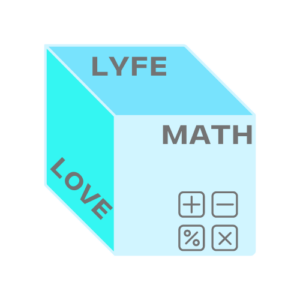
Find all of these on my Teachers Pay Teachers Store!
Final Thoughts
Integrating educational content into “Guess Who” turns a simple game into a powerful teaching tool. It keeps students engaged, reinforces key concepts, and adds an element of fun to your lessons. Give it a try and watch your students’ enthusiasm for learning grow!
What other kinds of Guess Who games would you use in your classroom?
